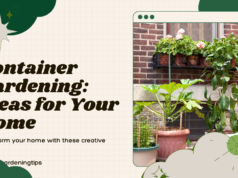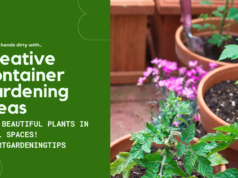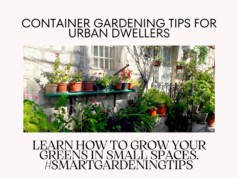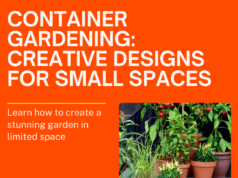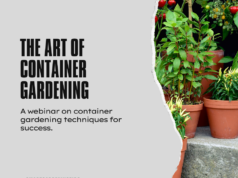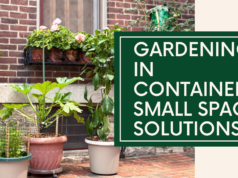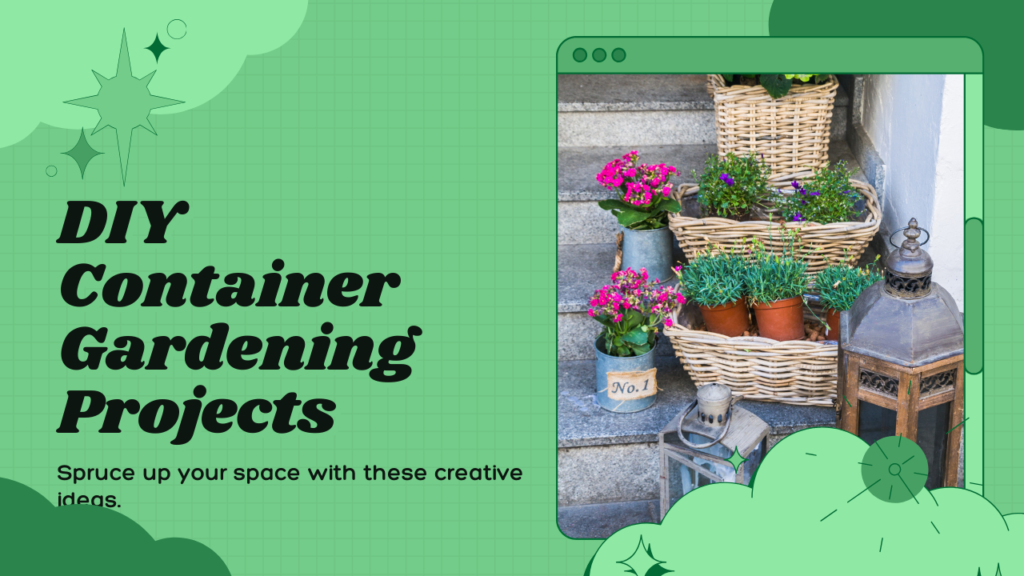
Welcome to the world of creative container gardening projects! If you’re looking to add a touch of innovation and beauty to your space, container gardening is the perfect solution. Whether you have a small balcony, a tiny backyard, or simply want to add some greenery indoors, container gardening allows you to grow thriving plants and herbs in containers of all shapes and sizes.
In this section, we will explore various innovative container gardening ideas and techniques. From choosing the right containers to caring for your container garden, we’ve got you covered. Let’s dive in and discover the wonderful world of container gardening!
Key Takeaways:
- Container gardening provides flexibility and enables you to beautify your space, even with limited outdoor areas.
- By choosing the right containers and considering factors like material, size, and drainage, you can create stunning designs for your container garden.
- An herb container garden is a great way to grow fresh herbs and enjoy their flavors in your cooking.
- Succulent container gardens are not only low-maintenance but also offer endless design possibilities.
- Vertical container gardens maximize space and allow you to grow a variety of plants vertically.
Benefits of Container Gardening
Container gardening offers numerous benefits that can enhance your gardening experience and bring beauty to your space. Whether you have limited outdoor space, mobility constraints, or simply want to add a touch of greenery to your surroundings, container gardening is a versatile and accessible option.
“Container gardening is an excellent way to enjoy gardening regardless of your living situation. It allows you to grow plants and flowers even if you don’t have a backyard or garden space.”
Beautify Your Space
One of the key benefits of container gardening is its ability to beautify your space. With the vast array of container designs, colors, and materials available, you can create stunning visual displays that complement your existing décor. Whether it’s vibrant blooms, cascading vines, or lush green foliage, container gardens add a pop of natural beauty that can transform any area into a serene retreat.
Additionally, container gardens allow you to easily change the aesthetics of your space by swapping out containers or rearranging them whenever you desire a fresh look. This flexibility empowers you to curate your environment and experiment with different arrangements to suit your evolving style.
Provide Flexibility
Container gardening offers unparalleled flexibility compared to traditional in-ground gardening. Containers can be moved and rearranged easily, allowing you to optimize the sunlight exposure for your plants. Whether you’re repositioning containers throughout the day or relocating them to a new area, you have complete control over creating the ideal growing conditions for each plant.
Furthermore, containers enable you to create microclimates within your space. You can choose specific containers that retain moisture for plants that thrive in humid conditions or select well-draining containers for moisture-sensitive plants. This level of customization ensures that every plant receives the optimal environment it needs to flourish.
For those who are renting or constantly on the move, container gardening provides the opportunity to nurture a garden and enjoy the benefits of gardening without the permanence of an in-ground garden. It allows you to bring your garden with you wherever you go, adding a sense of familiarity and connection with nature.
Enhance Accessibility
Another advantage of container gardening is its accessibility. If you have limited mobility or physical restrictions, container gardening eliminates the need for strenuous bending and kneeling associated with traditional gardening. The raised height of containers allows for comfortable gardening experiences, reducing strain on your joints and muscles.
Additionally, container gardening requires less maintenance compared to traditional gardens. The confined space of containers makes it easier to control weeds and pests, resulting in less time spent on tedious tasks. This accessibility aspect ensures that gardening remains enjoyable and accessible to individuals of all ages and abilities.
Affordable and Cost-Effective
Container gardening can also be a cost-effective alternative to traditional gardening. It requires minimal upfront investment compared to planning and preparing a traditional garden bed. You can start with a few containers and gradually expand your garden as time and budget permit.
Moreover, container gardening allows for efficient resource utilization. It requires smaller amounts of water, fertilizers, and soil amendments, making it an eco-friendly option that helps reduce waste and conserve resources.
Summary: Benefits of Container Gardening
Container gardening offers a myriad of benefits, including:
- Enhanced visual appeal and the ability to create a personalized garden aesthetic
- Flexibility to easily rearrange, optimize sunlight exposure, and create suitable growing conditions for your plants
- Increased accessibility and reduced physical strain
- Cost-effectiveness and reduced resource consumption
By embracing container gardening, you can enjoy all these advantages while cultivating a thriving and beautiful garden.
| Benefits of Container Gardening | Description |
|---|---|
| Beautifies your space | Choose from a wide range of containers to create stunning visual displays that complement your surroundings. |
| Provides flexibility | Easily move containers to optimize sunlight exposure, create microclimates, and adapt to changing needs. |
| Enhances accessibility | Eliminates physical strain and allows gardening for individuals with limited mobility or physical restrictions. |
| Affordable and cost-effective | Requires minimal upfront investment and utilizes resources efficiently. |
Choosing the Right Containers: Tips and Designs
When it comes to container gardening, choosing the right containers is essential for the success of your plants. The containers you select not only impact the aesthetic appeal of your garden, but they also play a vital role in providing the necessary conditions for your plants to thrive. In this section, we will provide you with valuable tips for selecting the perfect containers and share some inspiring designs to enhance your gardening projects.
Tips for Choosing the Right Containers
Consider the following factors when selecting containers for your garden:
- Material: Choose containers made from durable and weather-resistant materials such as ceramic, plastic, or fiberglass. These materials help retain moisture and prevent damage from extreme temperatures.
- Size: Select containers that are appropriate for the size of your plants. Ensure they have enough depth for root growth and sufficient width to accommodate the spread of your plants.
- Drainage: Opt for containers with drainage holes to prevent waterlogged soil. Proper drainage is crucial for the health of your plants and prevents root rot.
By considering these tips, you can ensure that your containers provide the ideal environment for your plants to flourish.
Inspiring Container Designs

Now that you know the essential tips for choosing the right containers, it’s time to get creative with your designs. Here are a few ideas to inspire you:
“Think outside the box when it comes to container designs. You can repurpose old watering cans, vintage teapots, or even wooden crates as unique and eye-catching planters. Let your imagination run wild and experiment with different shapes, textures, and colors.”
Creating visually appealing container designs not only adds charm and personality to your garden but also elevates the overall aesthetics of your outdoor space.
As you can see from the image above, the right combination of containers can turn your garden into a stunning work of art. Get inspired by various container shapes, sizes, and colors to add depth and visual interest to your garden display.
By taking the time to choose the right containers and exploring creative designs, you can create a container garden that is not only functional but also visually captivating. Whether you prefer a sleek and modern look or a whimsical and eclectic style, there are endless possibilities to match your personal taste.
Herb Container Garden: Growing Herbs in Containers
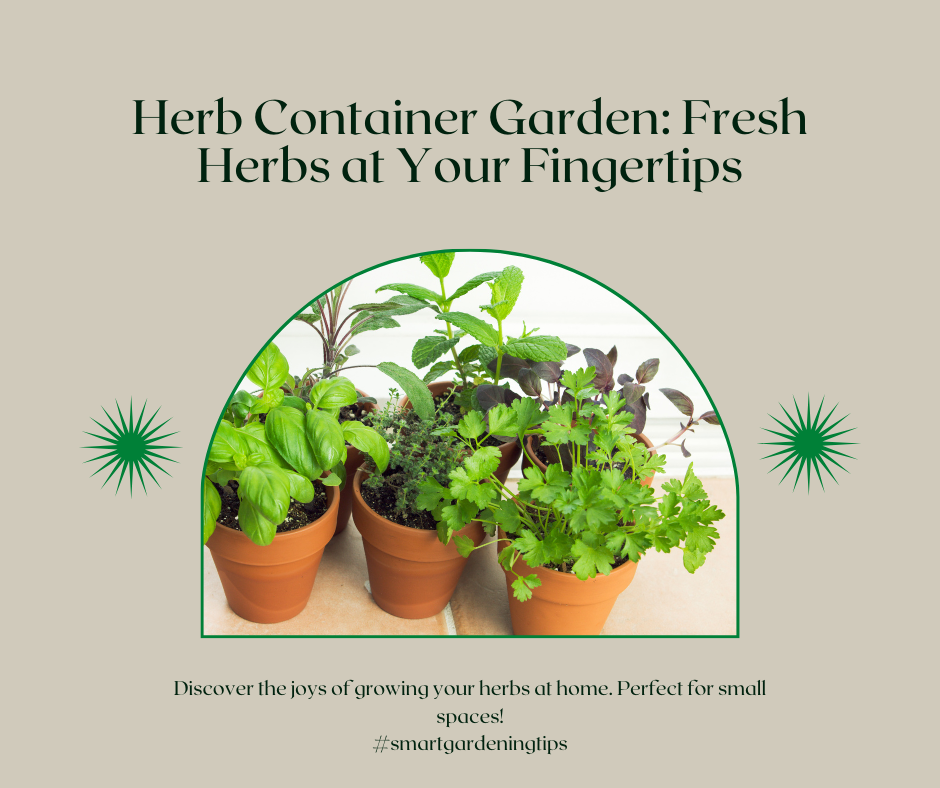
Welcome to the world of herb container gardening! Growing herbs in containers is a convenient and rewarding way to have a fresh and flavorful supply of herbs right at your fingertips. Whether you have limited outdoor space or simply want to enhance your existing garden, an herb container garden allows you to enjoy the aroma and taste of herbs year-round.
When it comes to choosing the best herbs for container gardening, there are a few factors to consider. Opt for herbs that don’t require extensive root systems and can thrive in the confined environment of a pot. Here are some popular herbs that are well-suited for container gardening:
- Basil: This aromatic herb is a staple in many cuisines and grows well in containers. It thrives in warm, sunny locations.
- Mint: With its refreshing scent and taste, mint is perfect for container gardening. However, it’s important to keep it in a separate pot to prevent it from taking over your other plants.
- Thyme: A versatile herb that adds depth to various dishes, thyme is a great choice for container gardening. It prefers well-drained soil and lots of sunlight.
- Parsley: This herb is easy to grow in containers and adds a fresh flavor to your dishes. It’s best to start with young plants and ensure they receive plenty of sunlight.
- Chives: Chives are resilient herbs that grow well in containers. They thrive in sunny spots and add a mild onion-like flavor to your meals.
These are just a few examples of popular herbs for container gardening. Experiment with different varieties and combinations to create your own herb garden oasis!
Now that you have selected your herbs, let’s dive into the essential care tips for ensuring their health and vitality in containers. Here’s what you need to know:
- Container Selection: Choose containers that have good drainage to prevent waterlogging. Terracotta pots and plastic containers with drainage holes are excellent options.
- Soil and Fertilizer: Use a well-draining potting mix specifically formulated for container gardening. Fertilize your herbs regularly using organic options such as compost or liquid seaweed.
- Watering: Herbs in containers require regular watering, but it’s crucial not to overwater them. Allow the top inch of soil to dry out between waterings.
- Sunlight: Most herbs thrive in sunny locations. Ensure your container garden receives at least 6 hours of direct sunlight each day.
- Pruning: Regularly prune your herbs to promote bushier growth and prevent them from becoming leggy. Use sharp scissors or shears to trim off any dead or yellowing leaves.
Remember, container gardening provides the opportunity to position your herb garden in the most optimal location and easily relocate it if necessary. With these care tips in mind, you’ll be on your way to a flourishing herb container garden.
Implementing an herb container garden can truly enhance your culinary creations and bring a touch of freshness to your daily life. Embrace the joy of growing herbs in containers and experience the satisfaction of harvesting your own homegrown flavors!
| Herb | Growing Conditions | Harvesting Time |
|---|---|---|
| Basil | Sunny location, well-drained soil | Harvest leaves as needed throughout the growing season |
| Mint | Partial shade to full sun, moist soil | Harvest leaves before the plant flowers for the best flavor |
| Thyme | Full sun, well-drained soil | Harvest leaves as needed throughout the growing season |
| Parsley | Partial shade to full sun, well-drained soil | Harvest leaves as needed throughout the growing season |
| Chives | Full sun to partial shade, well-drained soil | Harvest leaves as needed throughout the growing season |
Succulent Container Garden: Design Ideas and Care Tips
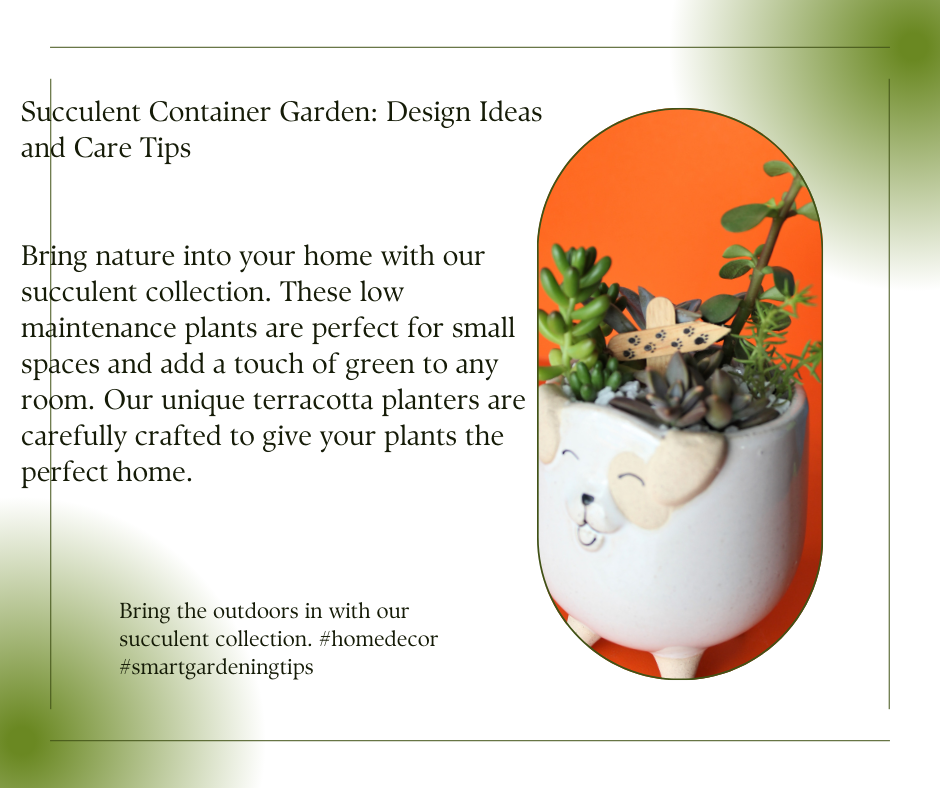
In this section, we will delve into the world of succulent container gardens. Succulents are popular choices for container gardening due to their unique shapes, colors, and low-maintenance nature. Whether you have a small balcony or a spacious garden, creating a succulent container garden can add beauty and charm to your space.
Design Ideas for Succulent Container Gardens
When designing your succulent container garden, you have endless possibilities to showcase your creativity. Here are some design ideas to help you create stunning displays:
- **Create a Succulent Terrarium**: Build a mini succulent ecosystem in a glass container, layering different types of succulents, rocks, and sand. This design adds a touch of whimsy to any space.
- **Mix and Match**: Combine various succulent varieties with contrasting shapes, colors, and sizes in one container. This eclectic arrangement creates visual interest and adds depth to your garden.
- **Vertical Gardens**: Use hanging containers or living walls to create vertical succulent gardens. This design maximizes space and creates a striking focal point.
- **Color Coordinated**: Choose succulents with similar hues or complementary colors to create a harmonious color scheme in your container garden.
- **Succulent Wreaths**: Arrange small succulents in circular containers to create beautiful living wreaths that can be displayed indoors or outdoors.
Remember to consider the size of your container and the growth habit of your succulents when planning your design. Allow enough space for the succulents to grow and thrive.
Caring for Succulents in Containers
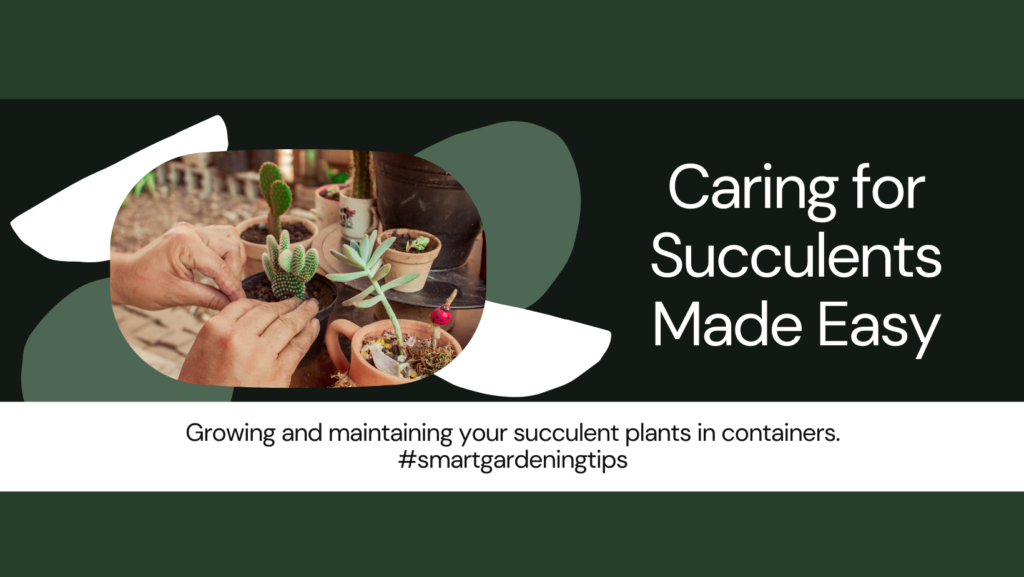
Although succulents are known for their low maintenance, they still require proper care to thrive in containers. Here are some essential care tips for your succulent container garden:
- **Well-Draining Soil**: Succulents thrive in well-draining soil. Choose a specialized succulent or cactus mix that provides good drainage and aeration.
- **Watering**: Succulents have unique water needs. Avoid overwatering as it can lead to root rot. Allow the soil to dry out between waterings and water deeply but infrequently.
- **Light Requirements**: Most succulents prefer bright, indirect light. Place your containers in an area that receives partial to full sun. If growing indoors, place them near a sunny window.
- **Temperature and Humidity**: Succulents are generally adaptable to various temperature and humidity conditions. However, they thrive in moderate temperatures between 60°F and 75°F (15°C and 24°C).
- **Fertilizing**: Succulents have low nutrient requirements. Use a balanced liquid fertilizer diluted to half strength once or twice a year during the growing season.
Regular inspection and maintenance are crucial for the health of your succulents. Remove any dead or damaged leaves, and be on the lookout for signs of pests, such as mealybugs or aphids.
By following these design ideas and care tips, you can create a beautiful and thriving succulent container garden. Now, let’s take a moment to appreciate the beauty of succulent container gardens:
Explore the fascinating world of succulent container gardening and elevate your gardening experience.
| Succulent Variety | Care Level | Light Requirements | Watering Frequency |
|---|---|---|---|
| Haworthia | Easy | Partial to bright indirect light | Allow soil to dry out between waterings |
| Echeveria | Moderate | Full sun to partial shade | Water deeply when soil is completely dry |
| Crassula | Easy | Full sun to partial shade | Water sparingly; allow soil to dry between watering |
| Sedum | Easy | Full sun to partial shade | Water sparingly; allow soil to dry between watering |
Each succulent variety has its own care requirements. Refer to the table above to ensure you provide the ideal conditions for your succulents to thrive.
Vertical Container Garden: Maximizing Space with Vertical Gardening
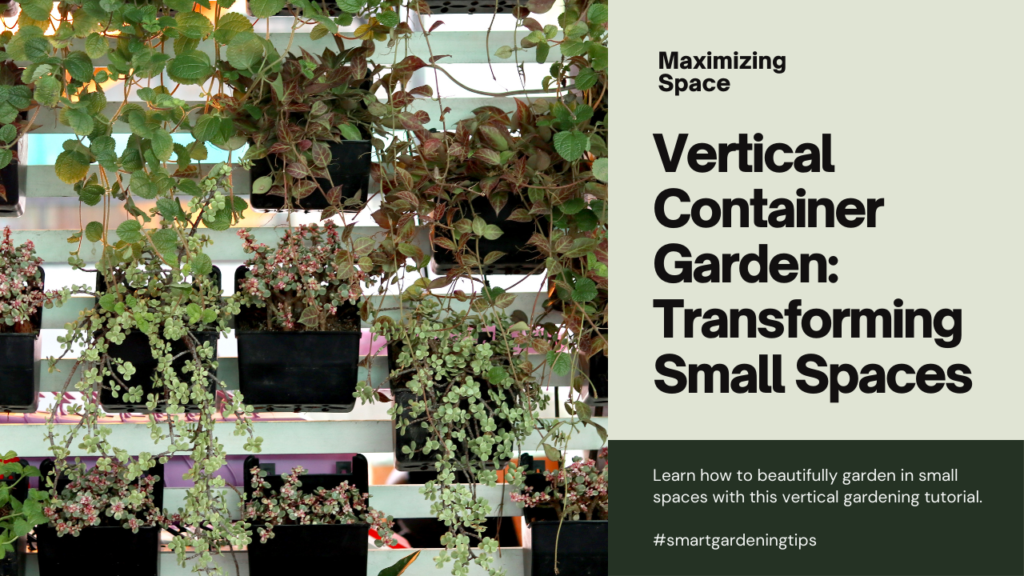
If you have limited horizontal space but still want to indulge in gardening, vertical container gardens are the perfect solution. This innovative approach allows you to maximize your available space by utilizing vertical structures. Whether you have a small balcony, a compact patio, or even a tiny backyard, vertical gardening with containers opens up a whole new world of possibilities.
When it comes to creating a vertical container garden, there are various methods and structures you can use. One popular option is vertical planters that can be mounted on walls or fences, allowing you to grow an assortment of plants in a vertical arrangement.
Another creative idea is using hanging baskets or stacking pots to create multi-level vertical gardens. These structures not only save space but also create a visually stunning display when filled with an array of colorful plants.
To inspire your vertical container garden project, here are a few popular plants that thrive in vertical gardens:
- **Climbing Roses**: These beautiful, fragrant flowers add a touch of elegance to any vertical garden. Train them to grow along trellises or pergolas for a breathtaking display.
- **Vibrant Vines**: Plants like Morning Glory, Clematis, and Sweet Pea are excellent choices for vertical gardens. Their climbing nature allows them to gracefully ascend structures and create a lush, colorful environment.
- **Herbs and Leafy Greens**: Vertical gardens are ideal for growing herbs and leafy greens, such as Basil, Thyme, Lettuce, and Spinach. These culinary delights can be conveniently harvested as needed for your recipes.
- **Trailing Succulents**: If you prefer low-maintenance plants, trailing succulents like String of Pearls or Burro’s Tail are perfect for vertical gardens. Their cascading foliage adds a unique charm to any vertical arrangement.
- **Compact Fruits and Vegetables**: Certain fruits and vegetables, such as Tomatoes, Peppers, and Strawberries, can thrive in vertical gardens. Opt for bush or dwarf varieties to ensure they adapt well to container gardening.
No matter which plants you choose for your vertical container garden, it’s important to consider their sunlight and water requirements. Additionally, make sure to provide adequate support or trellising for climbing plants to thrive.
Vertical gardening with containers not only allows you to grow a diverse range of plants in a compact space but also adds beauty and interest to your surroundings. Whether you’re starting small with a few pots or taking on a larger project, vertical container gardens are sure to make a statement. So, get creative and start maximizing your space with the wonders of vertical gardening!
Tips for Vertical Container Gardening Success:
- Select plants with similar water and sunlight needs.
- Ensure proper drainage in your containers to prevent waterlogging.
- Use high-quality potting soil to provide the necessary nutrients for your plants.
- Regularly monitor the moisture levels in your containers and water accordingly.
- Consider the weight of your vertical garden structures and ensure they are properly secured.
- Provide support such as trellises, stakes, or netting for climbing plants.
- Rotate your plants regularly to ensure even sun exposure and prevent overcrowding.
- Regularly prune and trim your plants to maintain their shape and encourage healthy growth.
With these tips and a little creativity, your vertical container garden will flourish, bringing beauty and nature to even the smallest of spaces. Explore the endless possibilities of vertical gardening and enjoy the rewards of a thriving, space-efficient garden.
| Plant | Light Requirements | Watering Needs |
|---|---|---|
| Climbing Roses | Full Sun to Partial Shade | Regular, Deep Watering |
| Vibrant Vines | Full Sun to Partial Shade | Regular, Moderate Watering |
| Herbs and Leafy Greens | Full Sun to Partial Shade | Regular, Moderate Watering |
| Trailing Succulents | Full Sun to Partial Shade | Sparse, Deep Watering |
| Compact Fruits and Vegetables | Full Sun | Regular, Moderate Watering |
Upcycled Container Garden: Creative Uses of Recycled Containers
Are you looking for innovative and sustainable ways to bring life to your garden? Look no further than an upcycled container garden. By repurposing recycled containers, you can create unique and charming homes for your plants while reducing waste and giving new life to old objects.
In this section, we will provide you with creative ideas and inspiration for using recycled containers in your garden. Get ready to embark on exciting DIY upcycled container garden projects that will make your garden a standout.
Transforming Everyday Items into Planters
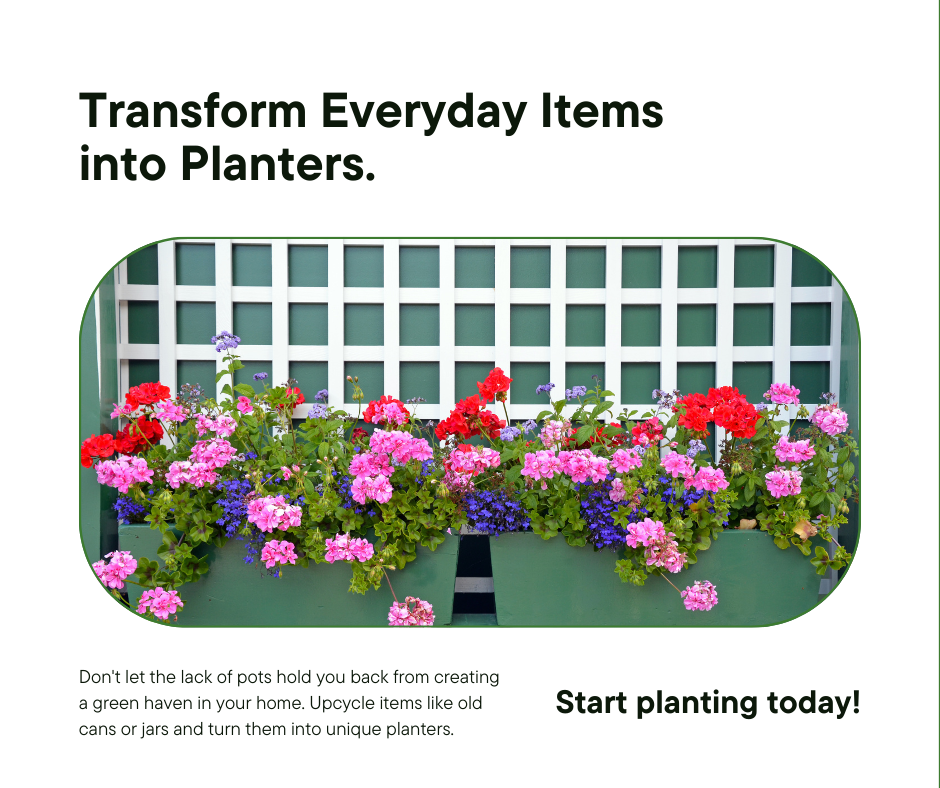
One of the joys of upcycled container gardening is the ability to transform everyday items into planters. Gather old coffee cans, mason jars, wine crates, and even vintage teapots to give your garden a touch of personality. Let your creativity run wild as you explore various materials and shapes to find the perfect fit for your plants.
Why not turn an old bicycle into a whimsical planter by attaching baskets filled with colorful flowers to its frame? Or repurpose a vintage watering can as a planter on your porch? With a bit of imagination, you can create a one-of-a-kind garden that reflects your style and embraces sustainability.
“Upcycled container gardening is an excellent way to add a unique touch to your garden while minimizing waste. It allows you to showcase your creativity and give a second life to objects that may have otherwise been discarded.” – Emily Thompson, Gardening Enthusiast
Vertical Gardening with Recycled Containers
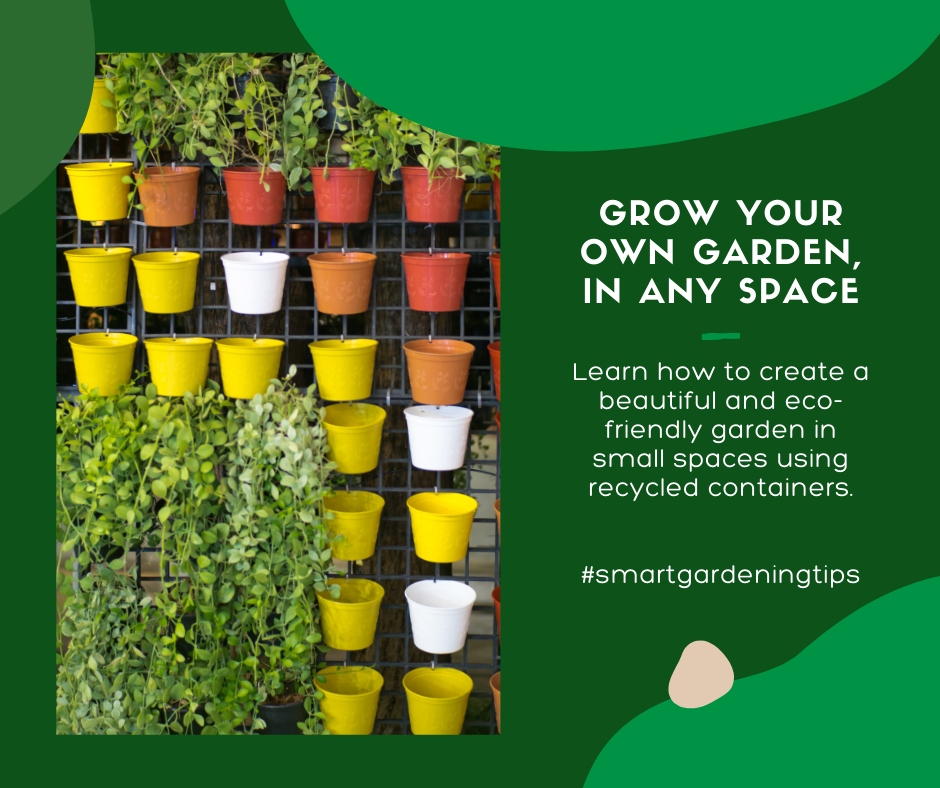
If you have limited space, vertical gardening with recycled containers can be a game-changer. By utilizing vertical structures such as pallets, trellises, or hanging racks, you can maximize your garden space and create a stunning visual display.
Attach recycled containers to the vertical structure, allowing vines, flowers, and herbs to cascade down. This not only adds beauty but also creates functional green spaces. Imagine harvesting fresh herbs from a hanging garden or enjoying a curtain of cascading flowers on your balcony.
Customizing Recycled Containers for Your Plants’ Needs
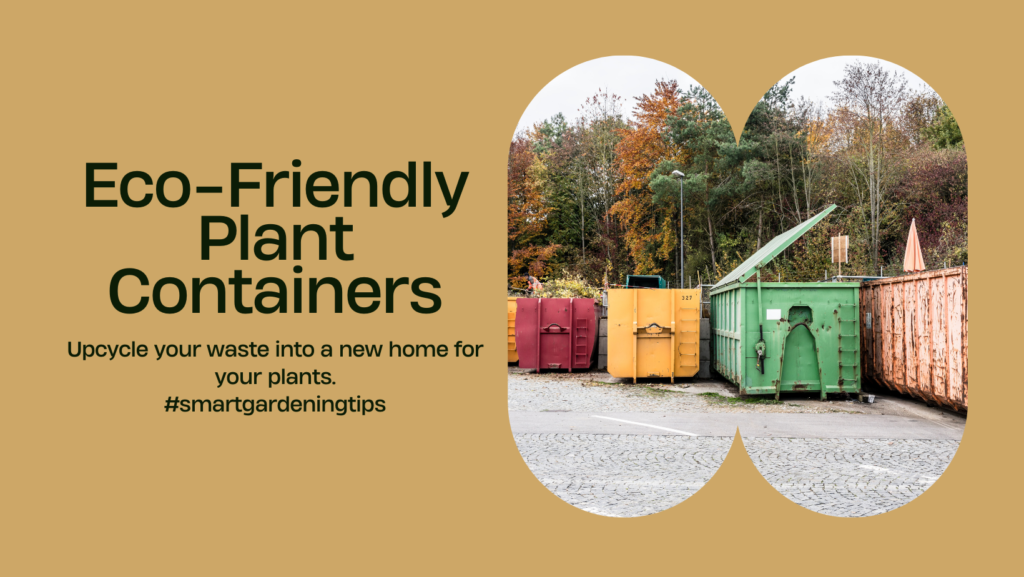
When repurposing recycled containers for your garden, it’s important to consider your plants’ specific needs. Ensure that the containers have proper drainage to prevent waterlogging and choose containers that offer enough space for your plants to grow and thrive.
Think outside the box and repurpose unconventional items such as discarded shoes or old teacups for small succulents or herbs. You can even repurpose a broken birdcage or a vintage dresser drawer to create a unique planter for your larger plants.
Remember to give your upcycled containers a new life by refreshing them with a fresh coat of paint or adding decorative elements like mosaic tiles or stenciled designs. This will not only enhance the visual appeal but also protect the containers from weathering.
Inspiring Upcycled Container Garden Projects
Here are a few inspiring upcycled container garden projects to spark your creativity:
- Turn an old ladder into a tiered herb garden.
- Transform wine bottles into self-watering planters.
- Repurpose a wooden crate into a vertical strawberry garden.
- Create a whimsical fairy garden using old teapots and cups.
These projects not only promote sustainability but also add a personal touch to your garden, making it a unique reflection of your style and resourcefulness.
| Upcycled Container | Planting Idea |
|---|---|
| Old Bathtub | Create a colorful flower garden with a mix of annuals and perennials. |
| Tin Cans | Plant small herbs like basil, mint, and parsley for convenient kitchen access. |
| Plastic Bottles | Grow vertical herb gardens by cutting the bottles and hanging them on a wall. |
There are endless possibilities when it comes to upcycled container gardening. Let your imagination guide you as you explore creative ways to use recycled containers for gardening, bringing both sustainability and beauty to your outdoor space.
Caring for Your Container Garden: Essential Tips and Insights
Now that you have created your beautiful container garden, it’s important to know how to care for it properly. In this section, we will share essential tips and insights to help you ensure the healthy growth and longevity of your container plants. From watering to fertilizing to pest control, we’ve got you covered with expert advice.
Watering Your Container Garden
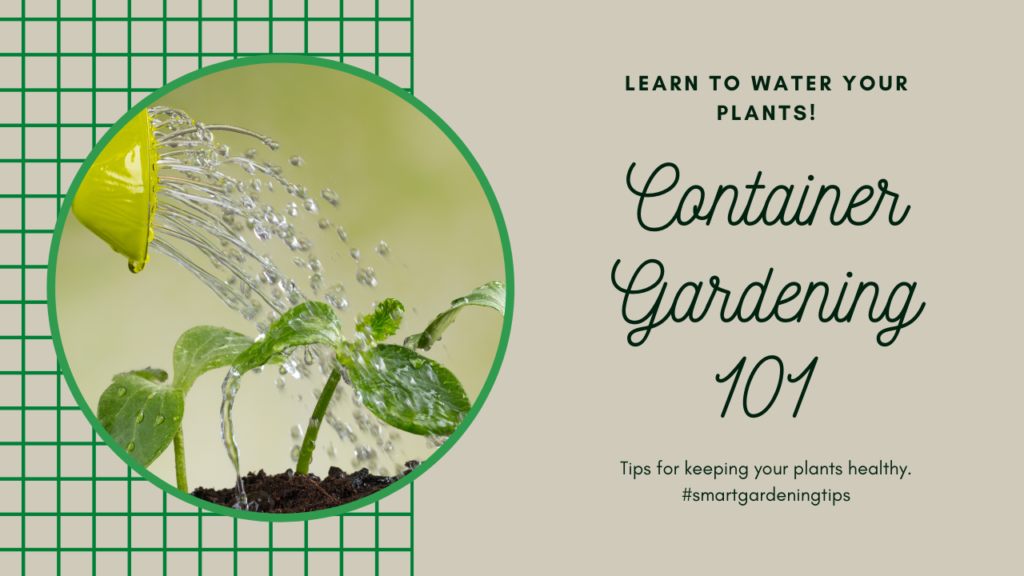
Proper watering is crucial for the success of your container garden. Keep in mind that containers tend to dry out faster than plants in the ground, so regular watering is essential. Here are some tips to help you:
- Check the soil moisture regularly by inserting your finger about an inch deep into the soil. If it feels dry, it’s time to water.
- Water slowly and thoroughly to ensure that the entire root ball is saturated.
- Avoid overwatering, as it can lead to root rot. Make sure the containers have drainage holes to allow excess water to escape.
Fertilizing Your Container Garden
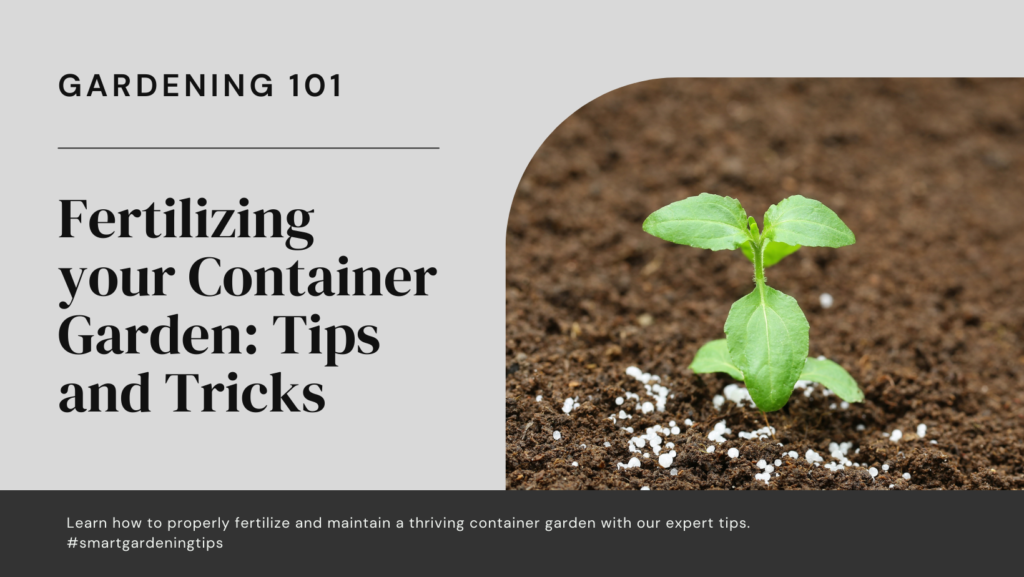
Container plants need regular fertilization to thrive. Here are some tips for fertilizing your container garden:
- Use a slow-release fertilizer or organic compost to provide a steady supply of nutrients.
- Follow the recommended dosage on the fertilizer packaging and avoid overfertilization, as it can burn the roots.
- Consider supplementing with liquid fertilizers during the growing season to give your plants an extra boost.
Pruning and Maintenance
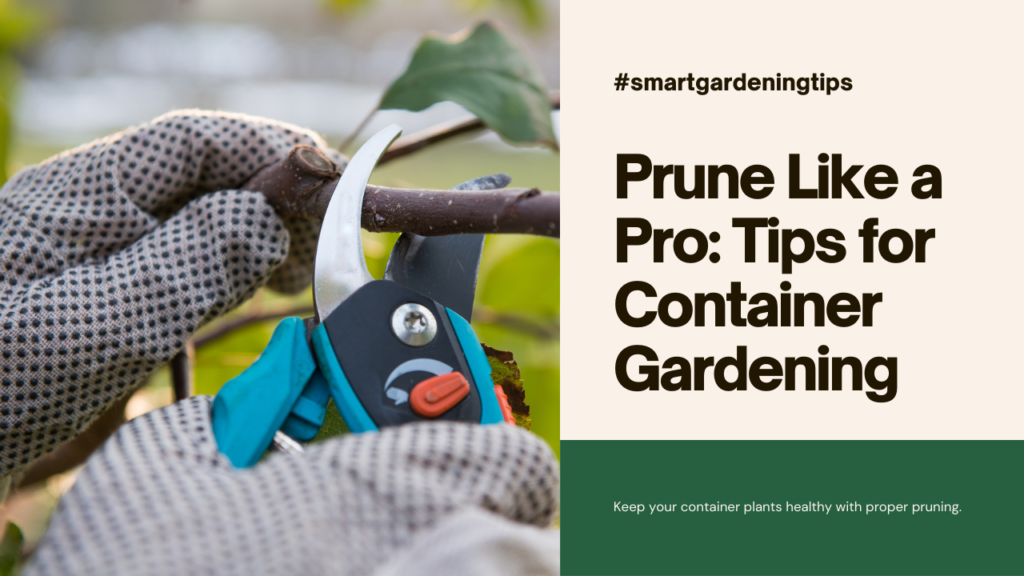
Regular pruning and maintenance will help keep your container garden looking its best. Here are a few things to keep in mind:
- Remove any dead or yellowing leaves to promote healthy growth.
- Pinch back leggy stems to encourage bushier growth.
- Keep an eye out for pests and diseases. Remove any affected plants or treat them with appropriate organic pest control methods.
Expert Insights
“Caring for container gardens requires a bit more attention compared to traditional gardens. Regular watering, proper fertilization, and occasional pruning are key to maintaining healthy and vibrant plants in containers.”
– Jane Green, Horticulture Expert
By following these essential tips and insights, you will be well-equipped to care for your container garden. Remember that each plant may have specific care requirements, so it’s essential to research the needs of your specific plants. With proper care, your container garden will flourish and bring beauty to your space.
FAQ
Q. What are some innovative container gardening projects?
A. Some creative container gardening projects include vertical gardens, succulent container gardens, and upcycled container gardens.
Q. What are the benefits of container gardening?
A. Container gardening offers versatility, accessibility, and can beautify limited outdoor spaces. It also provides flexibility for those with mobility constraints.
Q. How do I choose the right containers for my garden?
A. Consider material, size, and drainage when selecting containers. There are various container designs available to inspire your gardening projects.
Q. What are the best herbs for container gardening?
A. Some popular herbs for container gardening include basil, rosemary, mint, and thyme. They are easy to grow and thrive in containers.
Q. How do I design a succulent container garden?
A. You can create stunning succulent container gardens by using different varieties and arranging them in creative ways. Proper care, including well-draining soil and adequate sunlight, is important for succulents.
Q. How can I maximize space with a vertical container garden?
A. You can maximize space by utilizing vertical gardening techniques with containers. Choose plants like trailing vines and climbers for vertical gardens.
Q. How can I use recycled containers for gardening?
A. There are countless ways to upcycle containers for gardening. Repurpose items such as tin cans, plastic bottles, or old buckets to create unique and charming planters.
Q. What are some essential tips for caring for a container garden?
A. Proper watering, fertilizing, pruning, and pest control are important for container gardens. Ensure adequate drainage and monitor the specific needs of your plants.
Conclusion
In conclusion, container gardening offers a myriad of possibilities to beautify your personal space and cultivate a thriving garden. By applying the tips, exploring the innovative designs, and implementing the care insights presented in this article, you are well-equipped to embark on your own creative container gardening projects.
With container gardening, you have the opportunity to enjoy the benefits of fresh plants and aromatic herbs right at your fingertips. Whether you have a small balcony, limited outdoor space, or even a sprawling garden, containers provide flexibility and the ability to bring nature closer to you.
So, get started on your container gardening journey today! Experiment with different plant combinations, explore vertical gardening techniques, or try your hand at upcycling containers. With a little care and creativity, you can transform your space into a lush oasis and relish in the joy of nurturing vibrant greenery.


